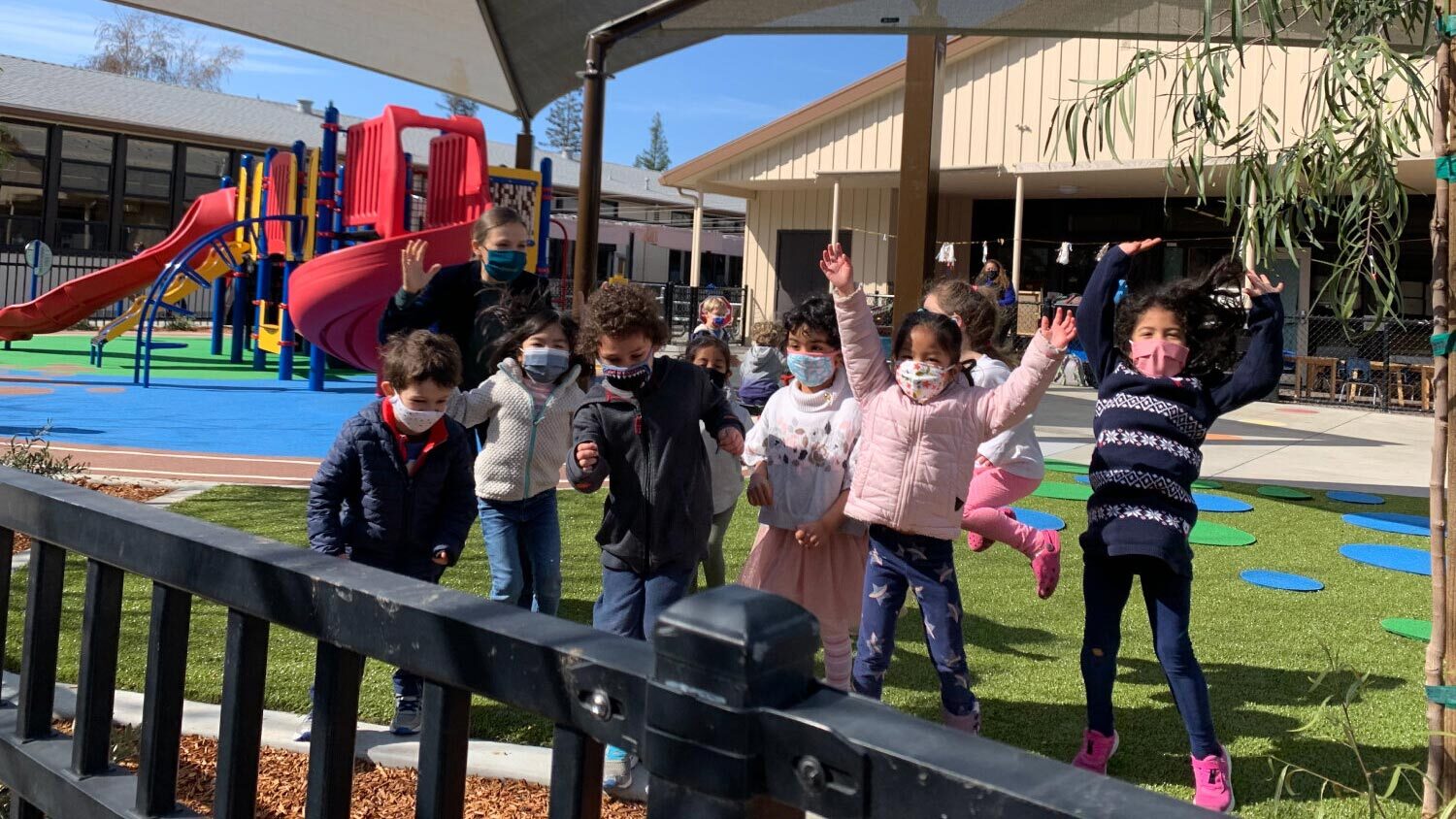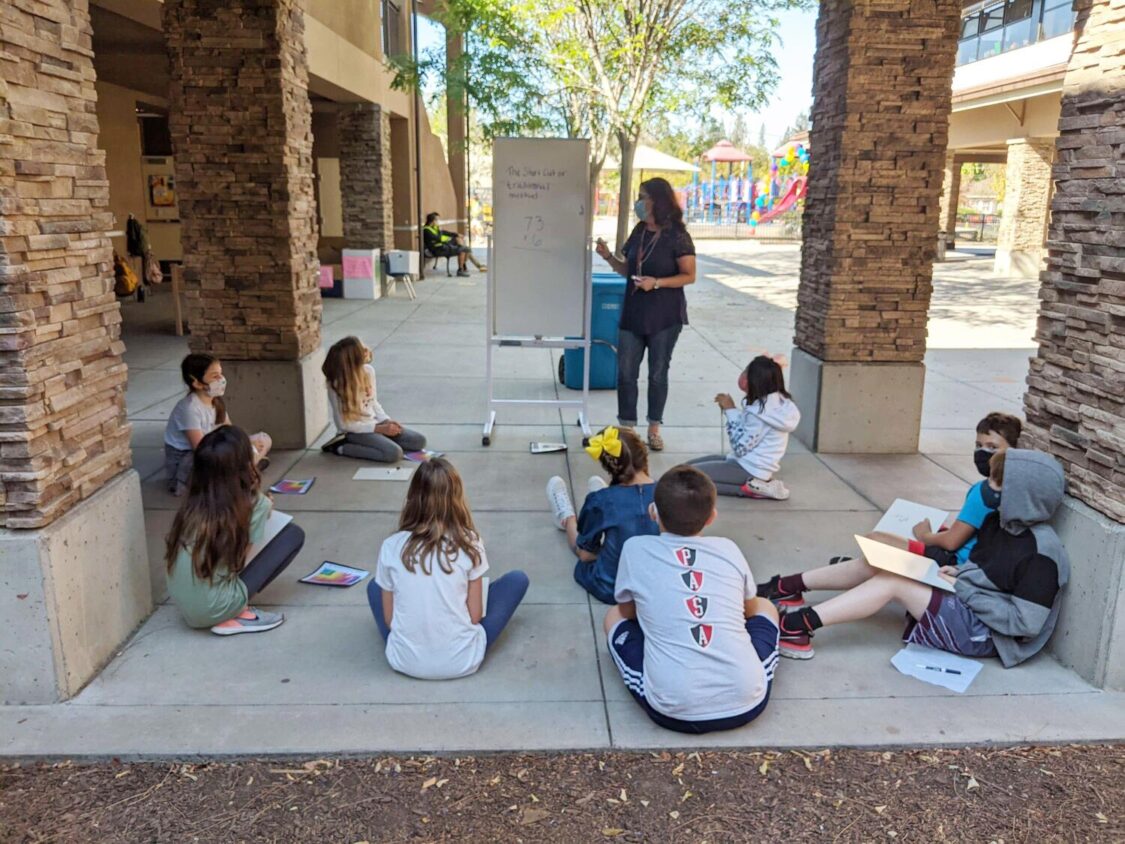How Design-Thinking Allowed One California School District to Stay Open This School Year


We are pleased to share these reflections from Menlo Park City School District with whom Transcend partnered to support innovation in the design of learning environments. The ways in which they’ve utilized user-centered design inspire us and shed important light on what’s necessary and possible in key moments.
Erik Burmeister, Superintendent of Menlo Park City School District
Design thinkers start from a place of possibility, not constraint. We say “yes, and” before no. We solve first for the primary end-user, which in a school’s case is the student. We call this human-centered design.
Amidst a sea of negative headlines, protests, lawsuits, public battles, and recall efforts criticizing school responses to the pandemic, a medium-sized PK-8 school district in the Bay Area of California was able to open its schools in September and safely keep them open all year with zero school-based COVID outbreaks while maintaining high levels of community support and confidence.

There are many reasons the Menlo Park City School District effort was a success. Like other districts that effectively reopened, MPCSD enjoys a long-standing collaborative relationship with its unions. They organized quickly and utilized their systems-thinking approach to respond to the pandemic. Teachers, support staff, and parents were invited to the planning table and every penny of federal and state dollars was used to its greatest benefit, for example in hiring more first grade teachers to bring back every incoming first grader to campus in September 2020 because we know emerging readers would have the greatest success in developing that fundamental skill by being in school every day. Committing to serve our youngest learners in person was an early decision that provided focus as we mapped out how to deploy our resources. With every decision, MPCSD’s Board exhibited an unwavering commitment to getting kids in school as early as possible, as long as possible, as safely as possible.
There are thousands of districts that can claim the same elements of success that MPCSD possessed, yet many of them were not able to open. As the Superintendent of MPCSD, I’m often asked how we did it.
I attribute our success fundamentally to our mindset.
In MPCSD, we grow design thinkers—students AND staff. In collaboration with Transcend and other forward-thinking partners, MPCSD has changed our relationship to problems and thus we solve them differently.
In MPCSD we grow design thinkers—students AND staff. In collaboration with Transcend, a nonprofit organization that supports school communities to re-design learning, and other forward-thinking partners over the last 10 years, MPCSD has changed our relationship to problems and thus we solve them differently.
Design thinkers see the world through a more objective lens of empathy rather than the subjective lens of stakeholder. We start from a place of possibility, not constraint. In other words, a response like “we can’t afford that” doesn’t stop us from considering all solutions. We say “yes, and” before no. We solve first for the primary end-user, which in a school’s case is the student. We call this human-centered design.
Collaborating across boundaries and bringing multiple voices to the process, we seek clarity amidst complexity and are biased toward action. We iterate often and test those iterations, using the resulting data to improve the design quickly. As designers, we achieve satisfaction when the users—primarily the students—are satisfied. Taking a user-centered approach was a critical component of our partnership work with Transcend and became a critical success factor in overcoming challenges this year.
A common barrier to reopening that played out repeatedly in the media was over teachers and families who felt unsafe or were medically unable to be in person. We circumvented this challenge by creating our own in-house virtual academy early in the planning process so teachers and families who couldn’t return in person had a viable alternative that met their academic and health and safety needs. Settling that decision quickly allowed our teams to spend productive time designing the virtual and hybrid programs, knowing we had the staff to make both options successful. By saying “yes, and” to the question of which type of program to design, we could offer real solutions for our end users.
I am neither naive nor arrogant. There was no “right” way to respond to a once-in-a-generation pandemic; I realize our approach had just as much chance of failure as it did of success. Teachers and leaders throughout the country have gone above and beyond even when outbreaks have happened, testing wasn’t available, or virtual learning was the only option. Sharing our story is not about shaming those who struggled to reopen; rather I share to learn from what we just experienced.
By keeping our end user, like our first grader learning to read, at the heart of our planning process, each member of our team was motivated to make the decisions necessary to get kids on campus. From special air filters to staggered lunch schedules to recess carts for each classroom, every solution was one step in the design process that allowed our system to open early and safely.
That’s it. When you think differently about problems, you can achieve much better solutions and much more quickly. #mindsetmatters
Watch this news segment to learn more about how a design-thinking mindset influenced Menlo Park City School District’s approach this year.
Transcend supports communities to create and spread extraordinary, equitable learning environments.

